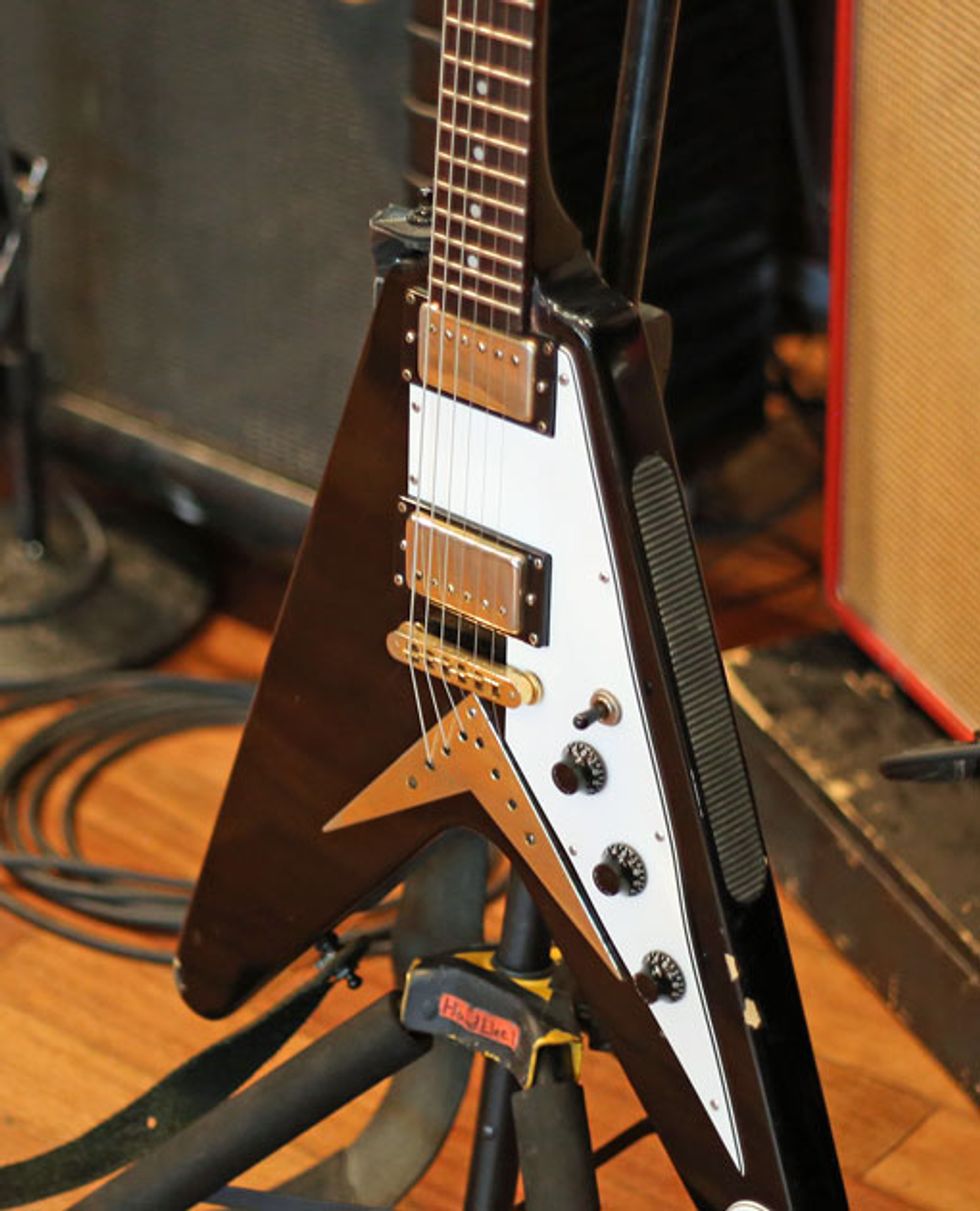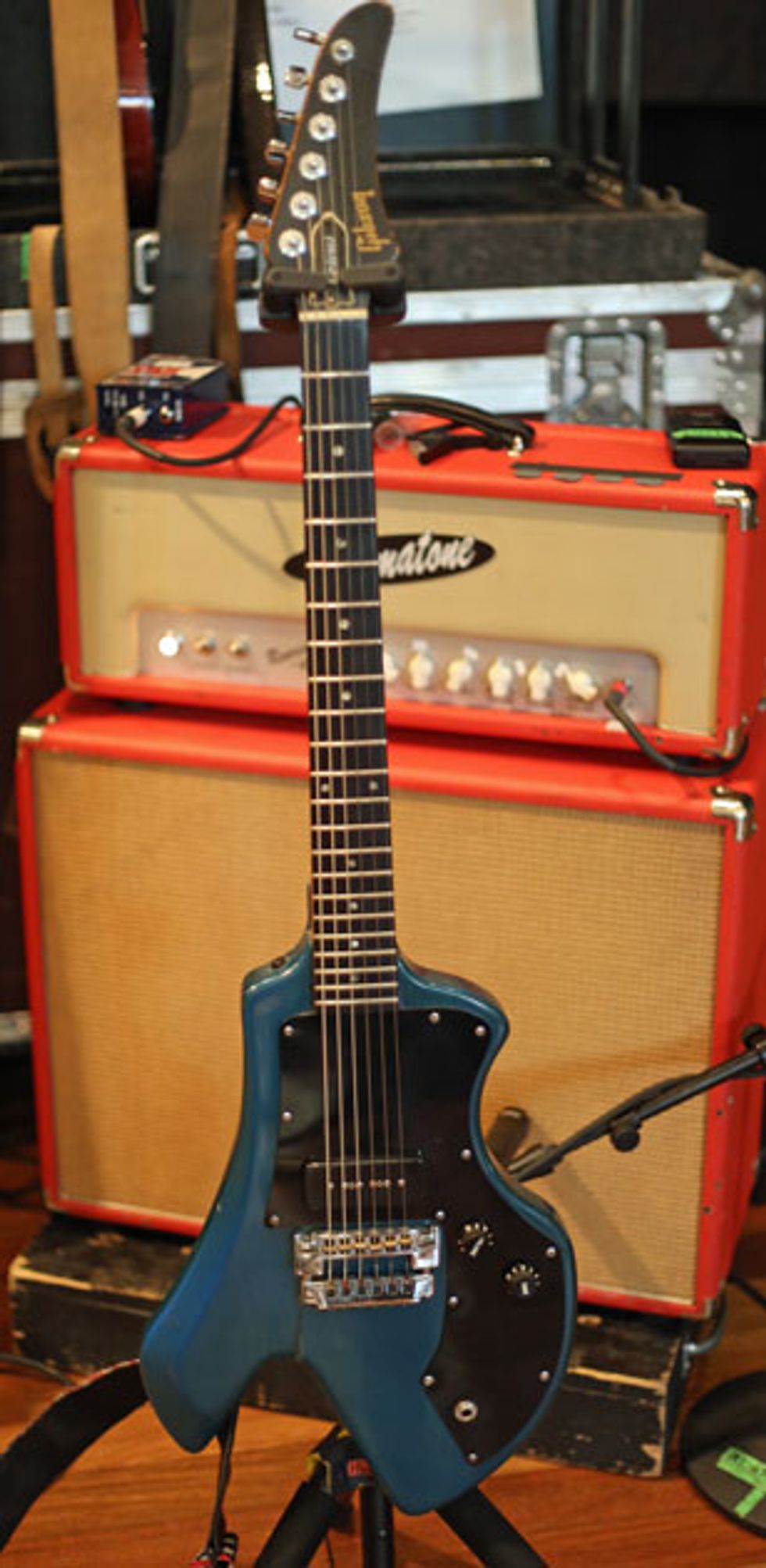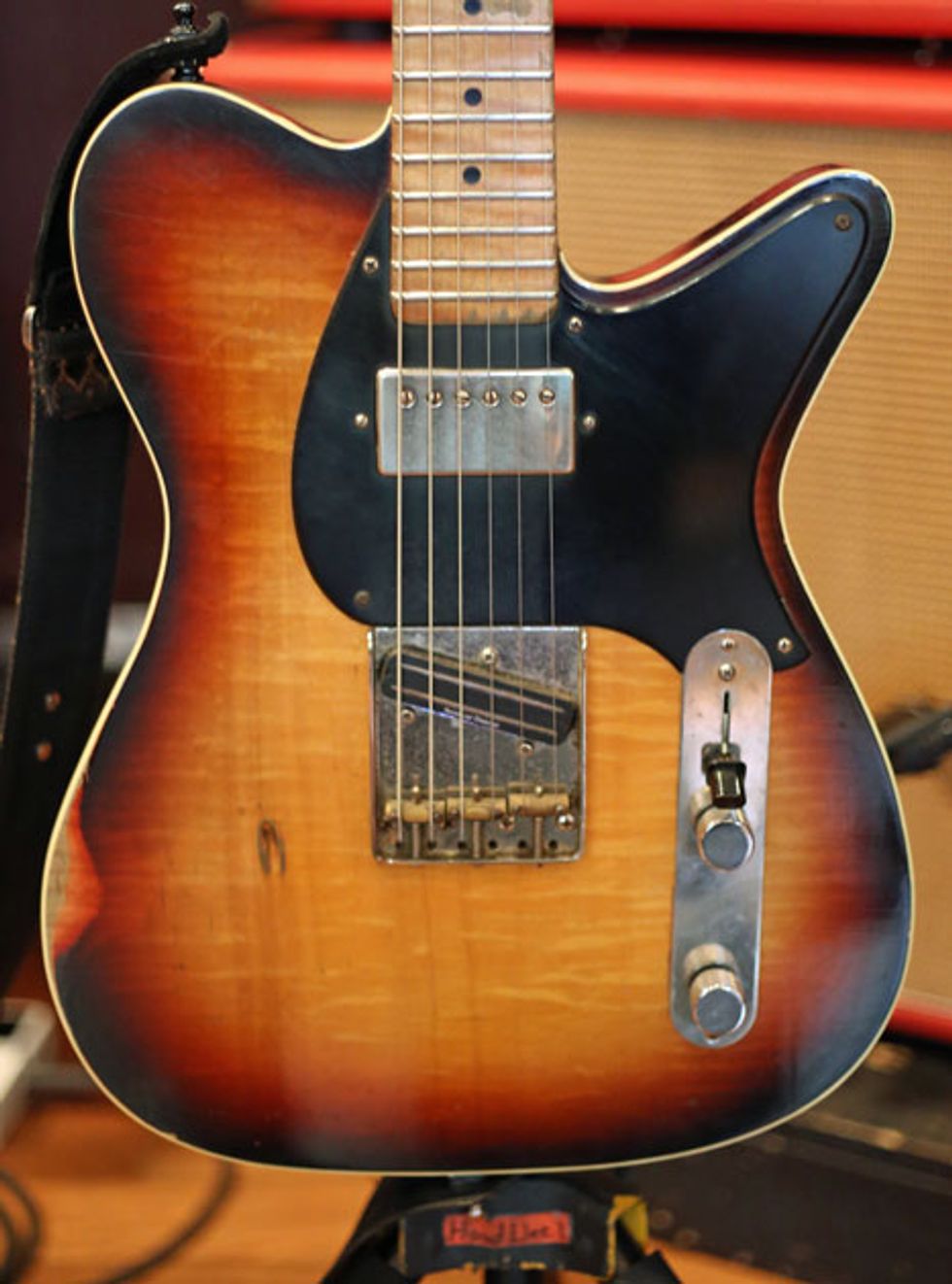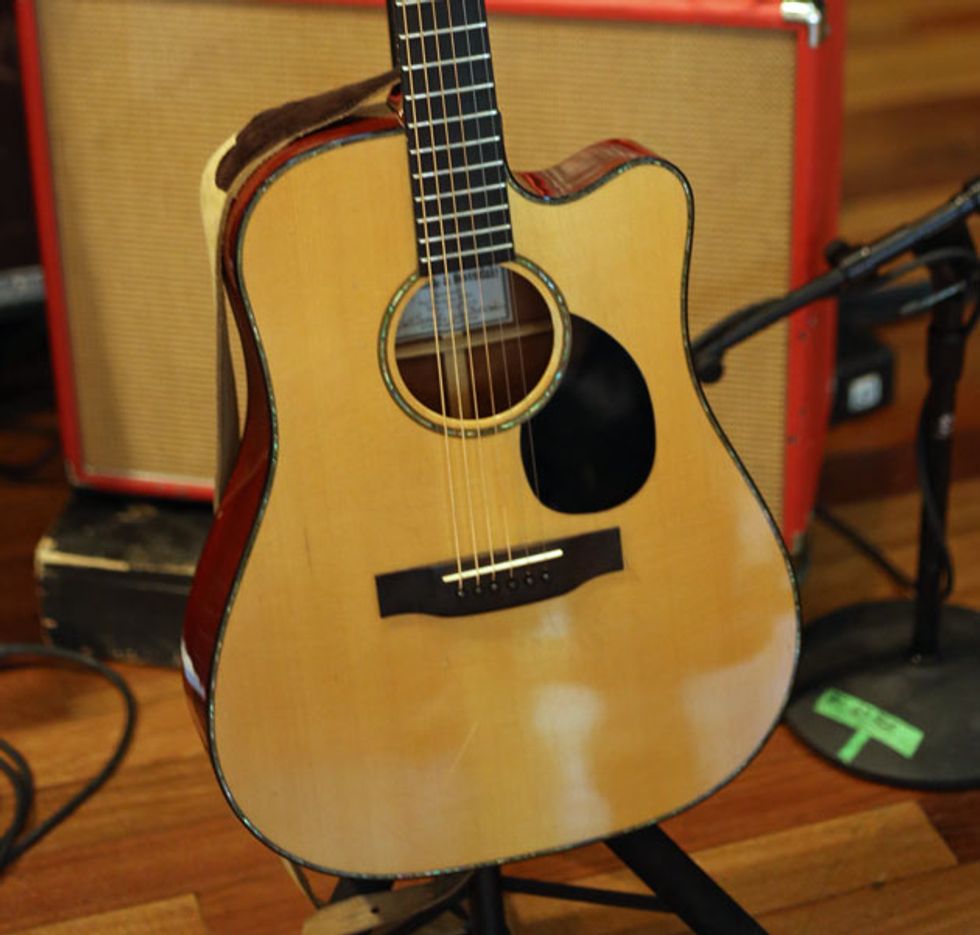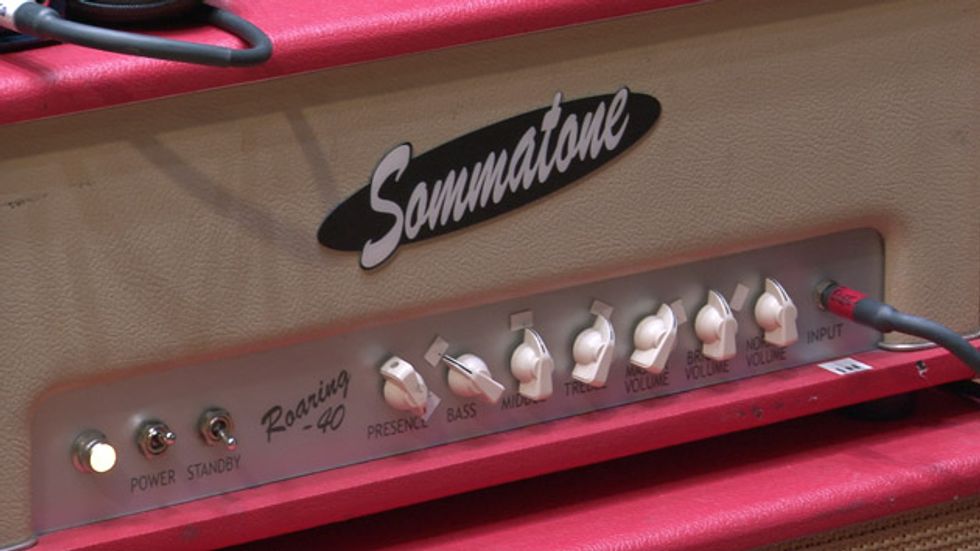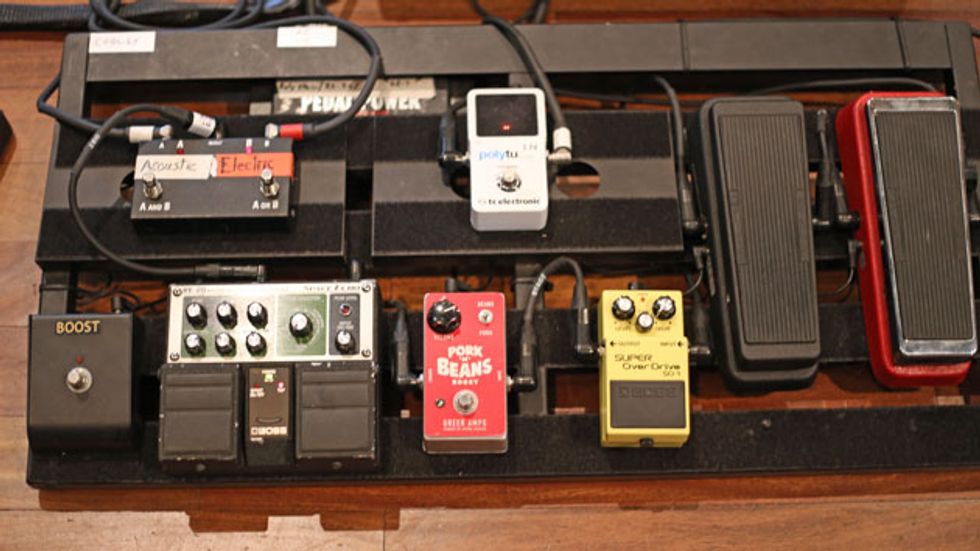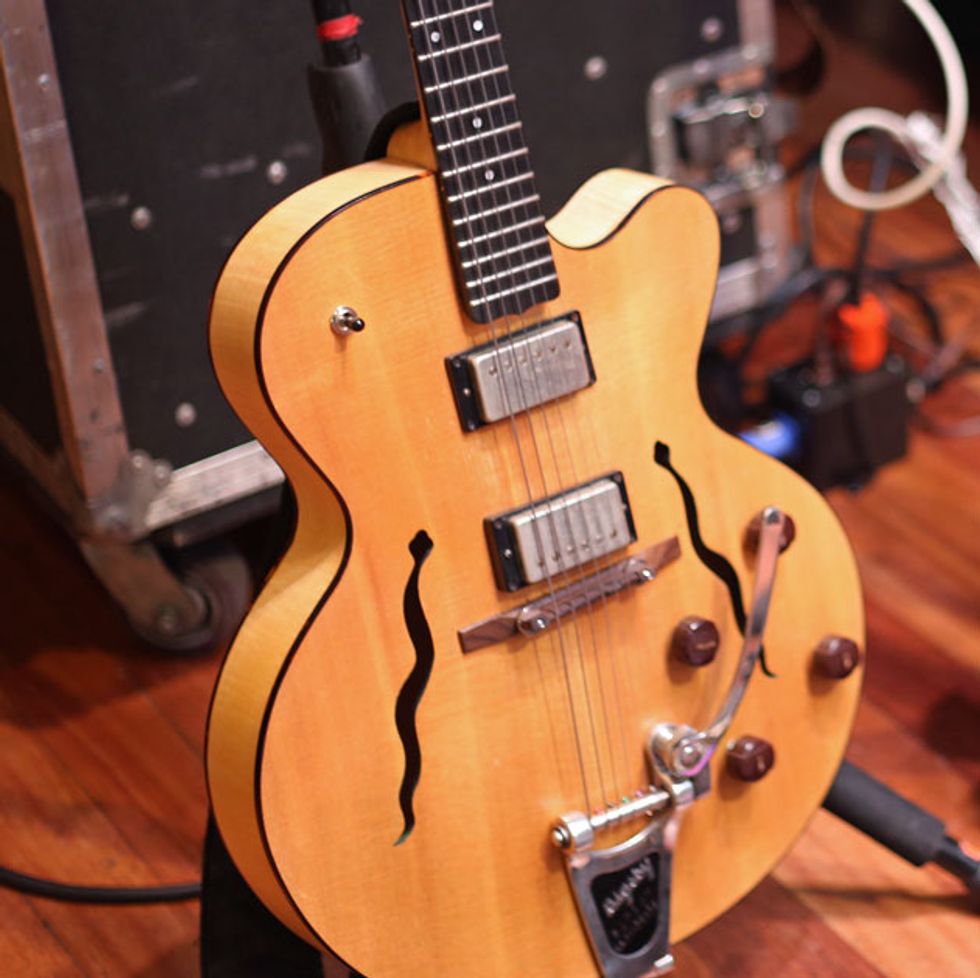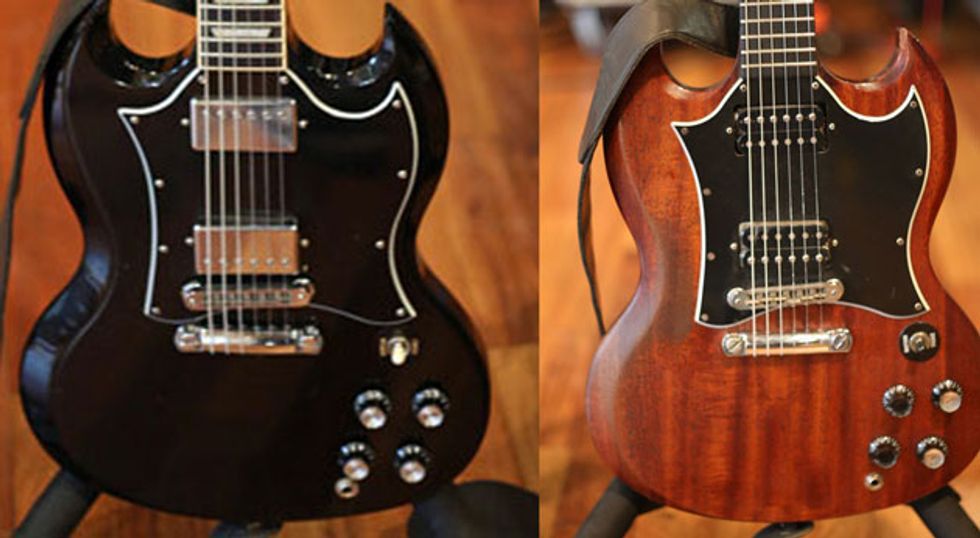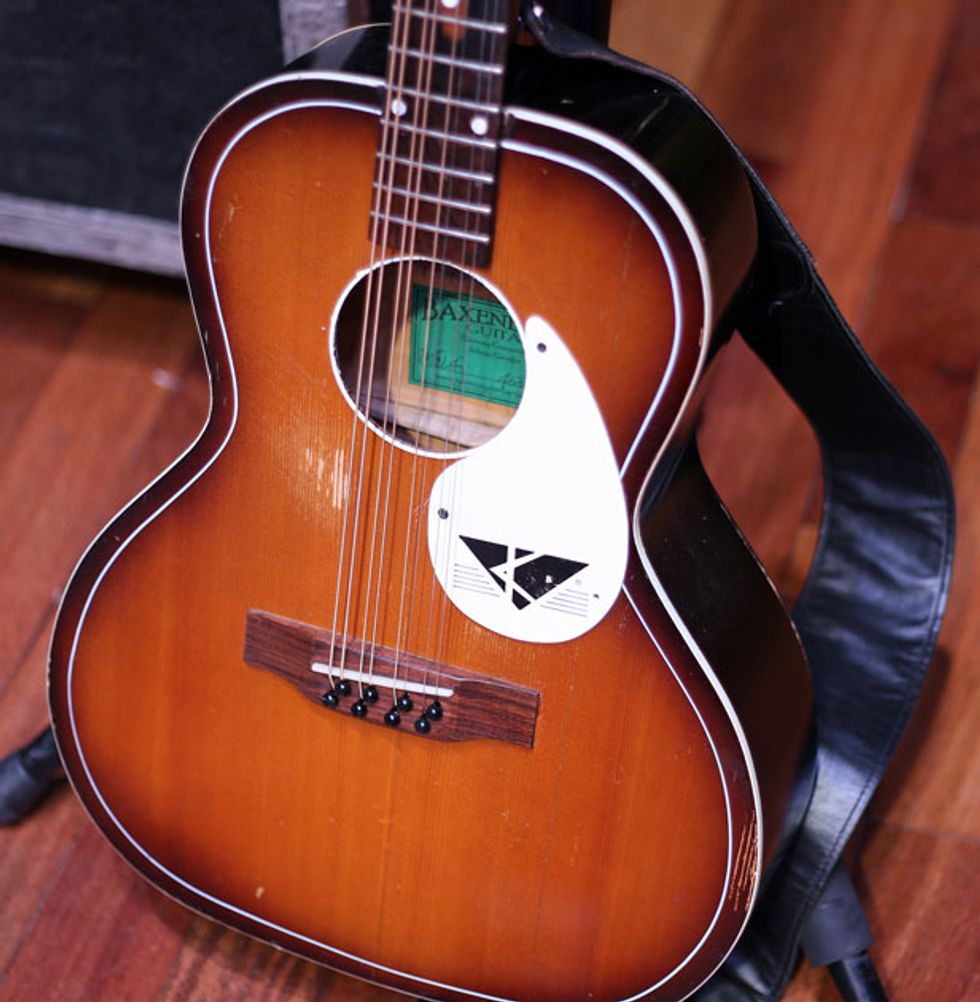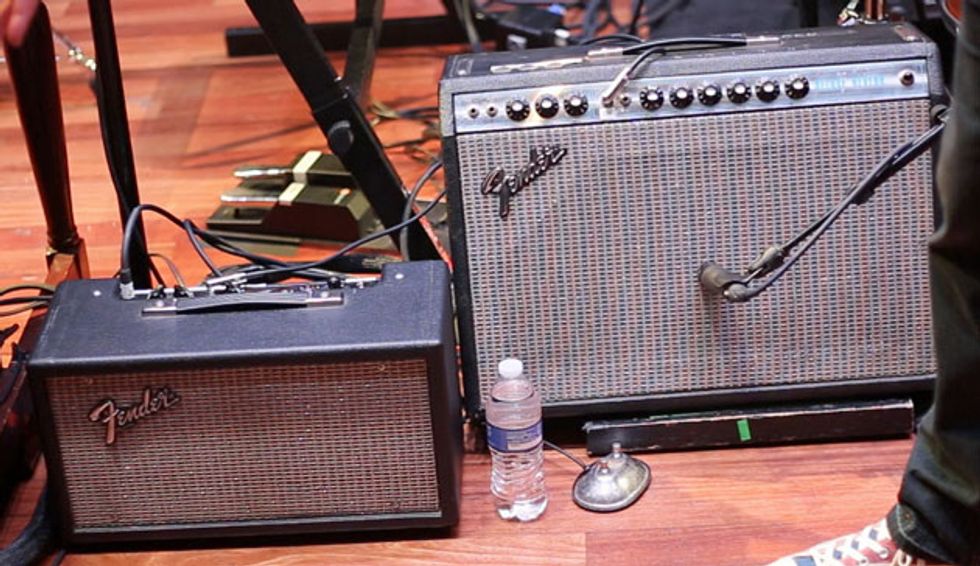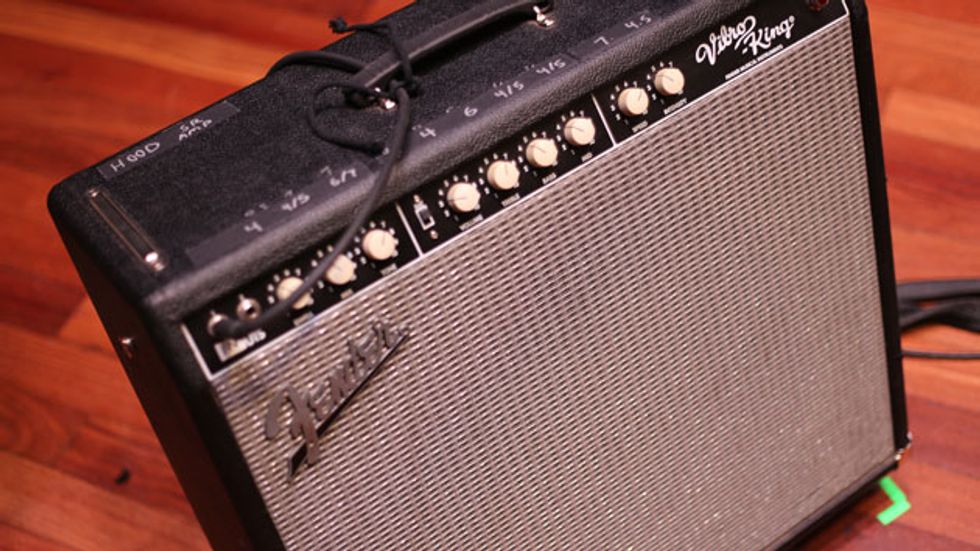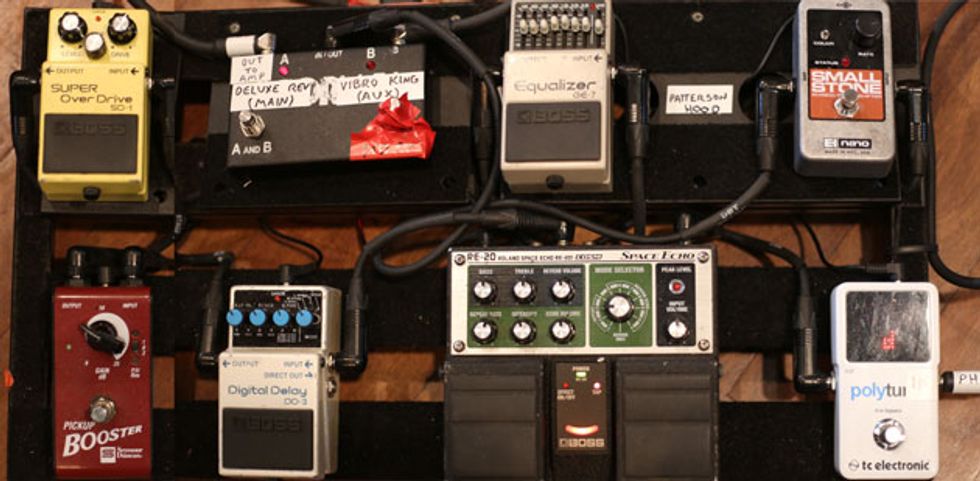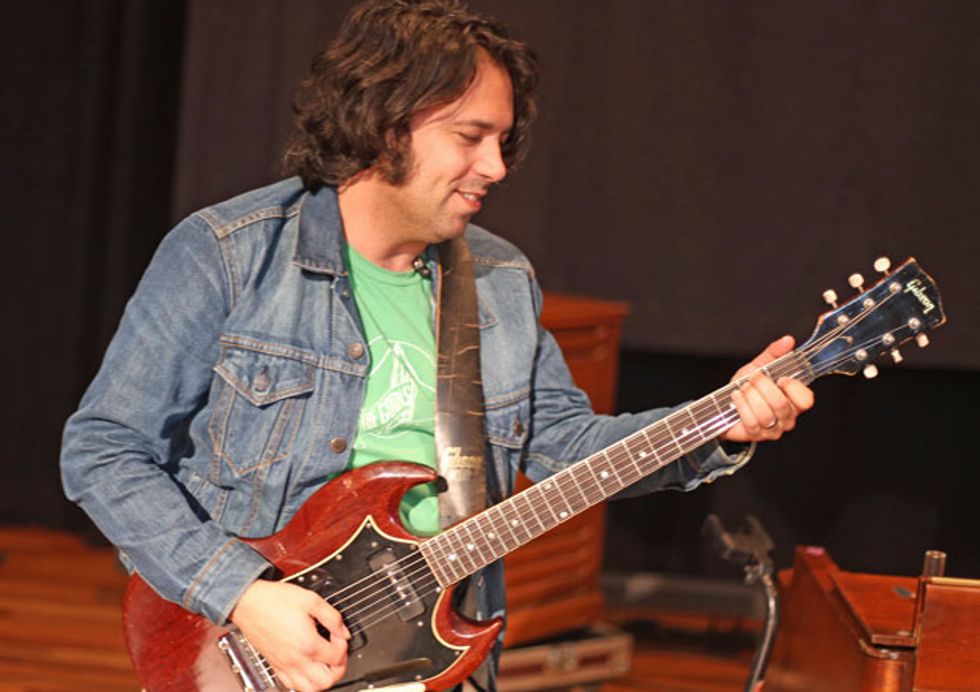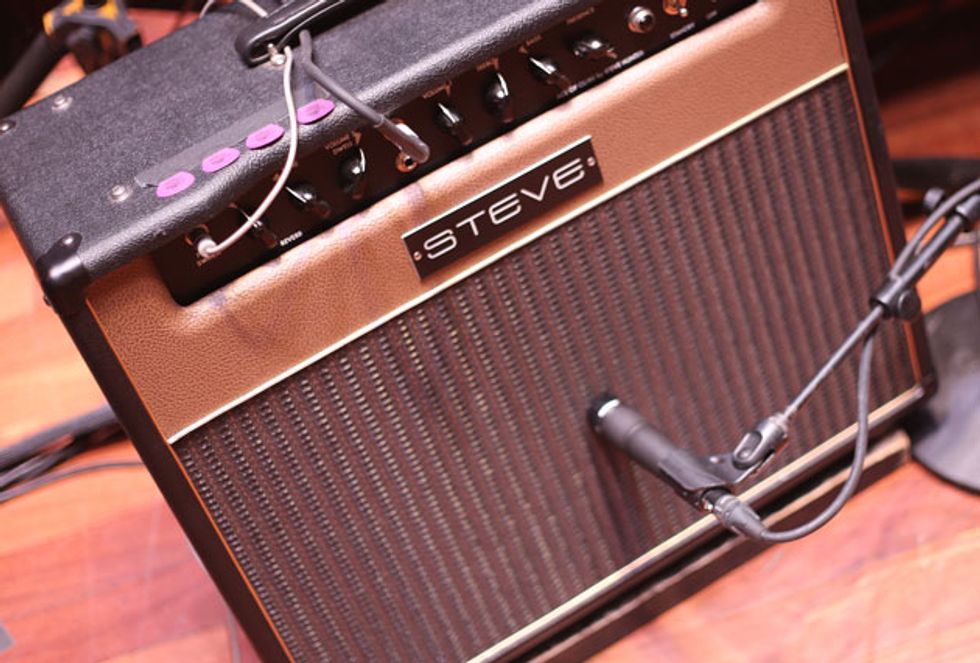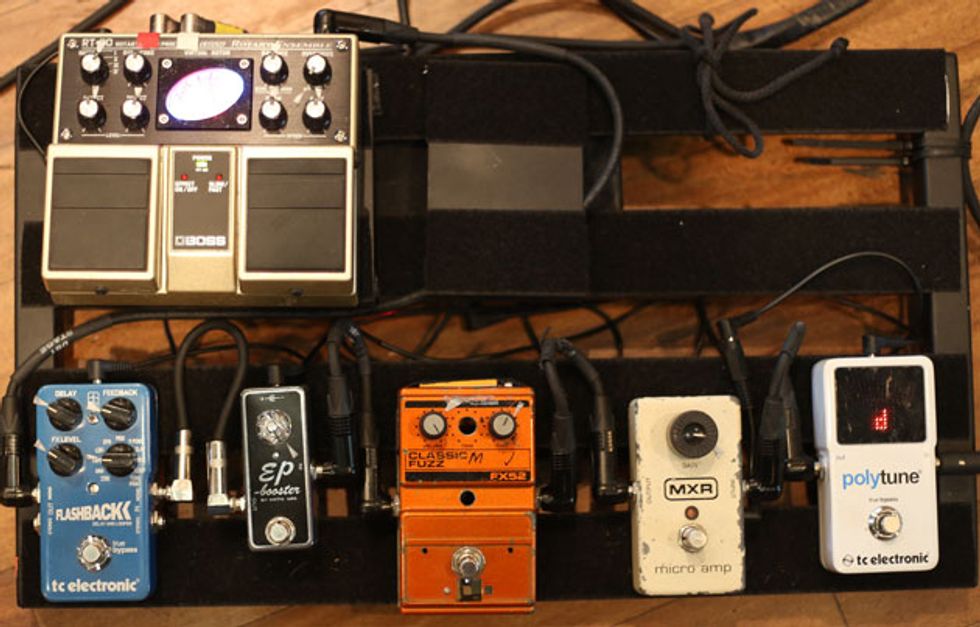Premier Guitar met with Mike Cooley, Patterson Hood, and Jay Gonzalez of the Drive-By Truckers before their window-rattling show at the Ryman Auditorium in Nashville. Sharing a love of the odd, these players rely on unusual instruments to create their genre-blending sound.
Mike Cooley’s Gear
Guitars
Drive-By Truckers cofounder Mike Cooley tours with a gritty boat of oddball beauties. First up is a stock Epiphone Flying V that has suffered some damage, but was glued back together.

Cooley describes his Gibson Corvus I as a “bad idea from the ’80s,” but he keeps rocking it and has retrofitted it with a P-90 pickup.

Two axes made by Baxendale Guitars of Athens, Georgia, round out Cooley’s collection. The warped T-style electric sports a Seymour Duncan Hot Rails in the bridge position and a Duncan Seth Lover SH-55 at the neck.

When he needs an acoustic, he reaches for his custom Baxendale.
Amps
Cooley plugs into a single-channel Sommatone Roaring 40 head running into a matching Sommatone 2x12 open-back cab loaded with Eminence Red Coat speakers. He carries an unidentified Sound City head as a backup should the Sommatone give up the ghost.
Effects
Much like the rest of his rig, Cooley’s pedalboard remains fairly simple. The signal chain starts with a Dunlop JD-4S Rotovibe and a Dunlop Cry Baby Wah. For dirt, Cooley uses a Boss SD-1 Super Overdrive and a Greer Amps Pork ’N’ Beans boost. From there, the signal goes to a Boss RE-20 Space Echo before hitting a TC Electronic PolyTune and a Morley ABY Switcher. The latter allows him to move between his acoustic and electric rigs. Finally, a Sommatone Boost footswitch sits nearby for those moments when Cooley needs more gain. Mounted underneath his Pedaltrain board, a Voodoo Lab Pedal Power2 Plus powers everything.
Patterson Hood’s Gear
Guitars
Patterson Hood travels with a mix of vintage and artisan guitars. The real looker in Hood’s collection is a semi-hollow Baxendale that’s equipped with a Bigsby and a pair of Seymour Duncan Antiquity humbuckers. Wes Freed, who does all the band’s artwork, designed the snake-shaped f-holes.

Hood also plays a pair of Gibson SGs, one of which is tuned down a whole-step.

Perhaps the most unusual instrument in the bunch is Hood’s Baxendale mandocello. Luthier Scott Baxendale starts by modifying the braces on an old Kay acoustic, then cuts a bridge and nut, and finally replaces the old tuners with new mandolin tuners. The mandocello is tuned F–C–F–C.
Amps
For amps, Hood goes old-school Fender with a 1972 Deluxe Reverb, which he runs with a reissue ’63 Fender Tube Reverb. (The man likes ’verb on top of ’verb, sometimes employing both units at the same time.)

Hood keeps a Fender Vibro-King handy as an auxiliary amp.
Effects
Like Cooley, Hood loads up a Pedaltrain board with a few essential stomps. After plugging into a TC Electronic PolyTune, Hood flaunts normal convention by placing his delays
before his overdrives and distortions. Up first are a Roland RE-20 Space Echo and a Boss DD-3 Digital Delay. He then goes into a Seymour Duncan Pickup Booster, Boss SD-1 Super Overdrive, Boss GE-7 Equalizer, and an Electro-Harmonix Small Stone Analog Phase Shifter. A Morley ABY Switcher splits the signal to both amps. A Voodoo Lab Pedal Power 2 Plus supplies juice to the entire board.
Jay Gonzalez’s Gear
Guitars
Much like his bandmates, multi-instrumentalist Jay Gonzalez favors old, odd gear. His go-to is a 1968 Gibson SG Special—it has the original P-90s and Vibrola tailpiece. His other vintage Gibson is a SG-100 with a single P-90 and Bigsby.
Amps

Gonzalez plugs into an Ace of Clubs combo built by another Athens-based builder, Steve Hunter. The amp has two channels—one British-flavored, the other American—plus reverb.
Effects

Jay Gonzalez’s board starts with a TC Electronic PolyTune tuner. From there, the signal runs into his MXR Micro Amp, a DOD FX52 Classic Fuzz—modded by Steve Hunter—and a Xotic EP Booster. The sound gets trippy with a TC Electronic Flashback delay and ends with a Boss RT-20 Rotary Ensemble.

